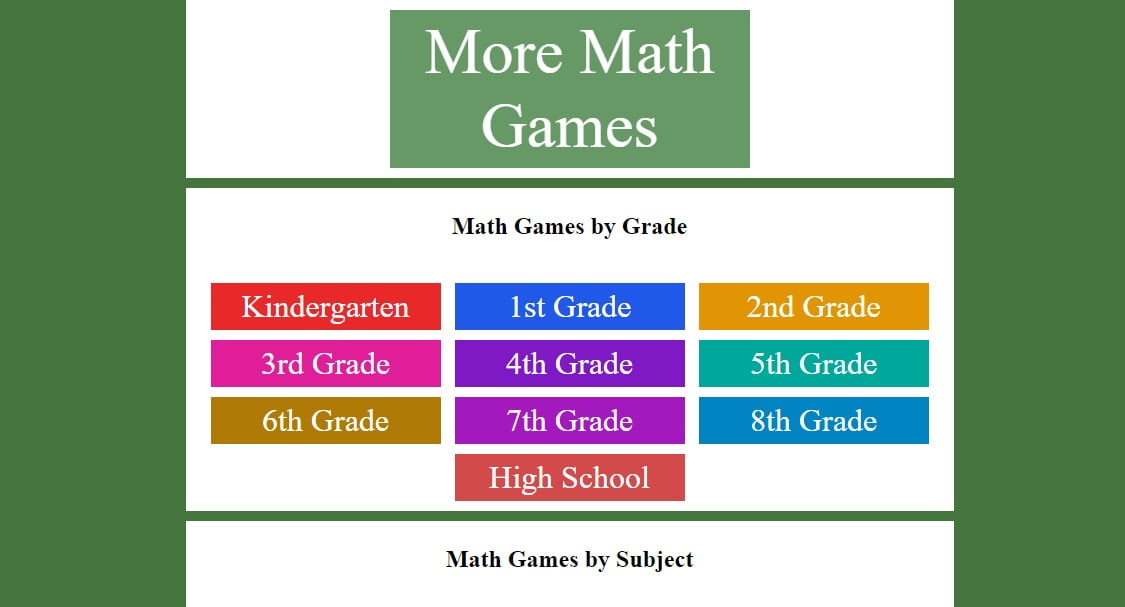01.housewilkins 02.hinton10 03.choicheni | You need to install or update Adobe Flash in order to play our games. Please click here to download now. or press F5 on your keyboard to reload the page If you believe you are receiving this message in error Click Here to report this game.
|
Our solar system is huge. There is a lot of empty space out there between the planets. Voyager 1, the most distant human-made object, has been in space for more than 40 years and it still has not escaped the influence of our Sun. As of Feb. 1, 2020, Voyager 1 is about 13.8 billion miles (22.2 billion kilometers) from the Sun — nearly four times the average distance from the Sun to icy Pluto.
Mainkan game online 5 Miles 2 Go gratis di Y8.com! Klik untuk main game 5 Miles 2 Go gratis! Kami juga punya banyak game lain yang mirip 5 Miles 2 Go! Click here to skip the ad and start game now. Racing Games, Car Games. Vote: Red Driver 2 4.03244. Desert Rally 4.064035. CNET is the world's leader in tech product reviews, news, prices, videos, forums, how-tos and more.
Needless to say, our solar system doesn't fit real well on paper — or a Web site for that matter.
Scientists figured out a while ago that writing out those huge numbers wasn't the best use of their time, so they invented the Astronomical Unit (AU). One AU, about 93 million miles (150 million kilometers), represents the average distance from the Sun to the Earth. It would take an airliner more than 20 years to fly that distance — and that's just a one-way ticket. (That's traveling at about 400 mph or 644 kilometers per hour.)
In an effort to bring these vast distances down to Earth, we've shrunk the solar system down to the size of a football field.
On this scale, the Sun, by far the largest thing in our solar system, is only a ball about two-thirds of an inch (17 millimeters) in diameter sitting on the goal line — that's about the width of a U.S. dime coin.
Considering a typical honeybee is about half an inch long, the fans are going to need telescopes to see the action.
5 Miles 2 Go 2: Play free online games includes funny, girl, boy, racing, shooting games and much more. Whatever game you are searching for, we've got it here. Play 5 Miles To Go unblocked online for free. Simple gameplay, excellent graphics, no download or registration needed. Did you like playing this Racing Game? Unblocked Games. Search this site. 1 on 1 Basketball. 1 on 1 Football. 1 on 1 Soccer Brazil.
The inner planets — Mercury, Venus, Earth and Mars — are about the size of grains of sand on a football field scale. They would be dwarfed by a typical flea, which is about 3 millimeters long.
Closest to the goal line is Mercury, just under a yard from the end zone (.8 yards to be specific). In reality, the average distance from the Sun to Mercury is roughly 35 million miles (58 million kilometers) or 0.4 AU. At this scale, Mercury's diameter would be scarcely as large as the point of a needle.
Venus is next. It is 1.4 yards from the end zone. The true average distance from the Sun to Venus is about 67 million miles (108 million kilometers) or 0.7 AU. Its size on this scale is about 0.15 millimeters.

On to Earth, sitting pretty on the 2-yard line. It is slightly larger than Venus at about 0.16 millimeters.
Just as most quarterbacks would be extremely pleased to find their team within two yards of a touchdown, Earth reaps many benefits from this prime location in the solar system. We are at the perfect distance from the Sun for life to flourish. Venus is too hot. Mars is too cold. Scientists sometimes call our region of space the 'Goldilocks Zone' because it appears to be just right for life.
As noted earlier, Earth's average distance to the Sun is about 93 million miles (150 million kilometers) from the Sun. That's 1 AU.
Mars is on the three-yard line of our imaginary football field. The red planet is about 142 million miles (228 million kilometers) on average from the Sun. That's 1.5 AU. On this scale, Mars is about 0.08 millimeters.
Asteroids roam far and wide in our solar system. But most are contained within the main asteroid belt between Jupiter and Mars. On our football field, you'd find them scattered like so many slow-moving linebackers between the four and eight yard lines. In real distances that's an average of roughly 186 million to 372 million miles (300 million to 600 million kilometers ) from the Sun, or 2 to 4 AU.
On this imaginary scale, these so-called 'linebackers' are more like microscopic specks than the real hulking linebackers that play for the NFL. (If you could lump together all the thousands of known asteroids in our solar system, their total mass wouldn't even equal 10 percent of Earth's moon.)
Jupiter remains pretty close to our end zone on the 10.5-yard line. Our solar system's largest planet is an average distance of 484 million miles (778 million kilometers) from the Sun. That's 5.2 AU. Jupiter is the largest of the planets, spanning nearly 1.75 millimeters in diameter on our football field scale. Jupiter's diameter is about equal to the thickness of a U.S quarter in our shrunken solar system.
5 Miles 2 Go Unblocked Everything Full
Saturn is on the field at 19 yards from the goal line. The ringed world is about 887 million miles (1.4 billion kilometers) from the Sun, or 9.5 AU. Saturn's size on this scale: 1.47 millimeters.
Uranus is about the point where our cosmic coach would call in an interplanetary field goal kicker. The gas giant is about 38 yards from our end zone. In real distances, that's an average of 1.8 billion miles (2.9 billion kilometers) — 19 AU — from the Sun. That's quite a kick. It's little wonder only one spacecraft has visited Uranus. At 0.62 millimeters on this scale, Uranus is just a little smaller than the letter 'R' in the word 'TRUST' on a penny.
Neptune is where things start to get way out. It is 60 yards from our solar goal line on the imaginary football field. That's an average of 2.8 billion miles (4.5 billion kilometers) or 30 AU from the real Sun. Neptune, a little smaller than Uranus, is 0.6 millimeters on this scale.
Tiny Pluto is much closer to the opposing team's end zone. It's about 79 yards out from the Sun or 3.7 billion miles (5.9 billion kilometers) on average in real distances. That's 39.5 AU.

On this scale, our little friend Voyager 1 has left the game and is well out in the stadium parking lot or beyond. The spacecraft is traveling away from the Sun at about 3.5 AU per year. That's about 326 million miles a year (525 million kilometers a year).
5 Miles 2 Go Unblocked Everything Game
Think about it.
On to Earth, sitting pretty on the 2-yard line. It is slightly larger than Venus at about 0.16 millimeters.
Just as most quarterbacks would be extremely pleased to find their team within two yards of a touchdown, Earth reaps many benefits from this prime location in the solar system. We are at the perfect distance from the Sun for life to flourish. Venus is too hot. Mars is too cold. Scientists sometimes call our region of space the 'Goldilocks Zone' because it appears to be just right for life.
As noted earlier, Earth's average distance to the Sun is about 93 million miles (150 million kilometers) from the Sun. That's 1 AU.
Mars is on the three-yard line of our imaginary football field. The red planet is about 142 million miles (228 million kilometers) on average from the Sun. That's 1.5 AU. On this scale, Mars is about 0.08 millimeters.
Asteroids roam far and wide in our solar system. But most are contained within the main asteroid belt between Jupiter and Mars. On our football field, you'd find them scattered like so many slow-moving linebackers between the four and eight yard lines. In real distances that's an average of roughly 186 million to 372 million miles (300 million to 600 million kilometers ) from the Sun, or 2 to 4 AU.
On this imaginary scale, these so-called 'linebackers' are more like microscopic specks than the real hulking linebackers that play for the NFL. (If you could lump together all the thousands of known asteroids in our solar system, their total mass wouldn't even equal 10 percent of Earth's moon.)
Jupiter remains pretty close to our end zone on the 10.5-yard line. Our solar system's largest planet is an average distance of 484 million miles (778 million kilometers) from the Sun. That's 5.2 AU. Jupiter is the largest of the planets, spanning nearly 1.75 millimeters in diameter on our football field scale. Jupiter's diameter is about equal to the thickness of a U.S quarter in our shrunken solar system.
5 Miles 2 Go Unblocked Everything Full
Saturn is on the field at 19 yards from the goal line. The ringed world is about 887 million miles (1.4 billion kilometers) from the Sun, or 9.5 AU. Saturn's size on this scale: 1.47 millimeters.
Uranus is about the point where our cosmic coach would call in an interplanetary field goal kicker. The gas giant is about 38 yards from our end zone. In real distances, that's an average of 1.8 billion miles (2.9 billion kilometers) — 19 AU — from the Sun. That's quite a kick. It's little wonder only one spacecraft has visited Uranus. At 0.62 millimeters on this scale, Uranus is just a little smaller than the letter 'R' in the word 'TRUST' on a penny.
Neptune is where things start to get way out. It is 60 yards from our solar goal line on the imaginary football field. That's an average of 2.8 billion miles (4.5 billion kilometers) or 30 AU from the real Sun. Neptune, a little smaller than Uranus, is 0.6 millimeters on this scale.
Tiny Pluto is much closer to the opposing team's end zone. It's about 79 yards out from the Sun or 3.7 billion miles (5.9 billion kilometers) on average in real distances. That's 39.5 AU.
On this scale, our little friend Voyager 1 has left the game and is well out in the stadium parking lot or beyond. The spacecraft is traveling away from the Sun at about 3.5 AU per year. That's about 326 million miles a year (525 million kilometers a year).
5 Miles 2 Go Unblocked Everything Game
Think about it.
